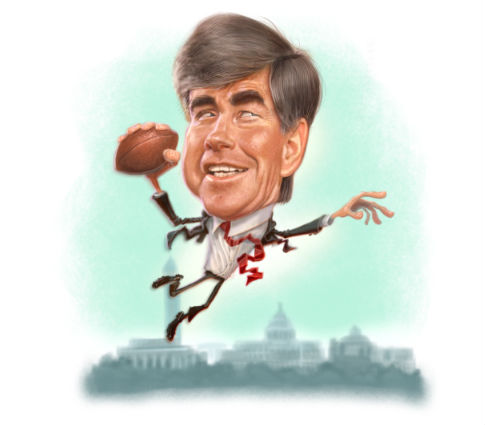Winning was one of Jack Kemp’s obsessions from an early age. He described his childhood as "all sports, all the time." When he wasn’t playing games with his brothers—football, baseball, basketball, or made-up sports—he’d play by himself.
Fitting in as the third of four boys was both a challenge and motivator for Jack. He especially wanted to match Tom, a great athlete and his lifelong hero. Paul said Kemp was always a fierce competitor, "pushing, pushing to win, pushing to achieve," and he accepted no less from his brothers. Dick once lost a game and said, "So what if I lose?" Jack was appalled. He teased Dick about it for years afterward.
Kemp decided at age five that he wanted to be a professional quarterback. As a sixth grader, he was assigned to compose an essay on a great invention. He wrote about the origin of the forward pass. At LA’s Fairfax High, he became quarterback and captain of the football team, and he dreamed of going further. "You have to understand my brother," his brother Tom said. "When Jack was a kid he would fantasize about what he wanted to do with his life. He had a mental picture of himself playing football, and he wasn’t going to rest until he got there. He believed it was his destiny."
Jack was a successful football player in high school and was named second team All City, but he was not recruited by a single major foot- ball school. Tom had played quarterback and baseball at USC. But USC—and UCLA—ignored Jack, deeming him too small (five feet ten, 175 pounds). He settled on attending Occidental College, also in LA, to train under freshman coach Payton Jordan, whom he greatly admired.
Kemp’s chief interest at Oxy, as it was called, was football. He majored in physical education and was a mediocre student at best. But he showed talents outside the classroom. His roommate, Jim Mora, a tight end on the football team and later coach of the New Orleans Saints, says, "There was always something special about Jack. Maybe it was his leadership qualities, but he was always somebody that you knew was going to be maybe beyond the ordinary."
Despite his drive, Kemp did not start for the freshman team. But one day Coach Jordan summoned him for a "confidential" talk. He told Kemp that if he was willing to work hard, he had the talent to make the National Football League. Kemp was thrilled. He took Jordan at his word and began working harder at practice and workouts. In those days, quarterbacks were not supposed to lift weights on the theory they’d develop the wrong muscles. But Kemp lifted anyway, to bulk up and had the desired effect. And the weight training paid off. Before long he was able to throw a football eighty yards, and throw it hard. On his very first play with the Occidental varsity, Kemp completed a sixty-yard touchdown pass. He was a sixty-minute man, playing safety on defense. He also punted. By his junior year he was the varsity starting quarterback. As a senior, he became team captain and was the third-leading passer among small colleges and was named honorable mention Little College All-American.
Kemp was fortunate that Oxy’s football team used a pro-style offense that allowed the quarterback to pass a lot. Other schools in Southern California used a single-wing formation that relied on a running attack, and the quarterback was essentially a blocker who ran occasionally but rarely passed. That wasn’t Kemp’s style. His childhood hero was Los Angeles Hall of Famer Bob Waterfield, a pure passer. That’s what Kemp wanted to be.
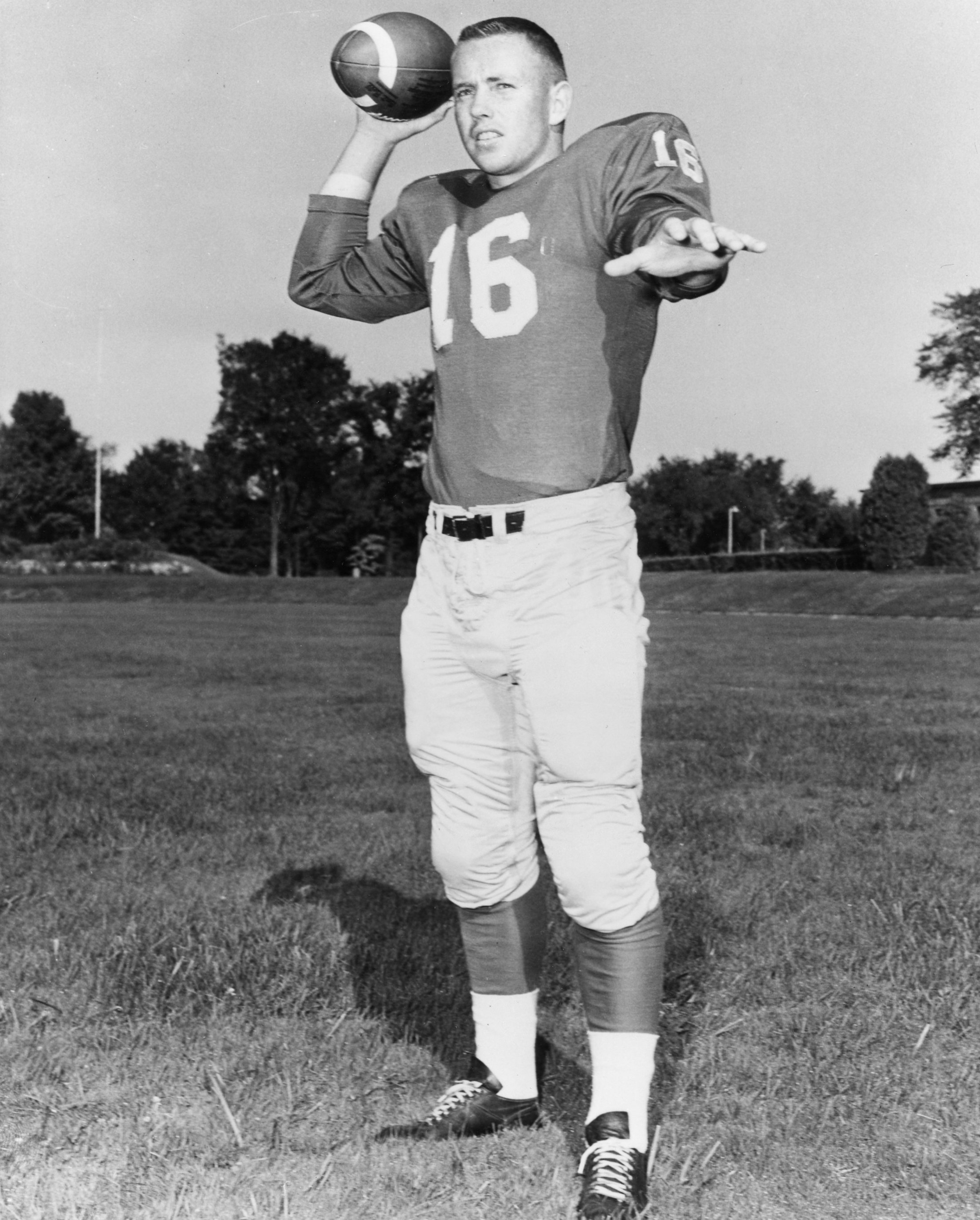
Kemp’s passing was his ticket to professional football. By his senior year, Kemp, six feet tall and weighing two hundred pounds, had finally grown to NFL quarterback size, though making it in the NFL was still a long shot. But his arm caught the attention of professional teams, and he was chosen in the seventeenth round of the NFL draft by the Detroit Lions, the 203rd player chosen.
Kemp’s professional career did not get off to an easy start. He was not an instant hit at the Lions’ training camp. Bobby Layne, the team’s hard-drinking Hall of Fame quarterback, dismissed Kemp as a ninny when he ordered a soft drink at a quarterback’s meeting. Layne informed Kemp he wouldn’t make it in pro-football until he started drinking alcohol, which Christian Scientists avoid.
Further complicating Kemp’s early career, Lions head coach Buddy Parker quit the team in the middle of training camp and moved to the Pittsburgh Steelers. He took Kemp with him, but not because he was convinced of Kemp’s talent. Parker’s home town was Kemp, Texas, and he’d latched onto Kemp as a kind of good luck charm. He didn’t keep Kemp for long.
At Occidental, Kemp’s most important moment was meeting, in his in his junior year, an attractive sophomore named Joanne Main. Jack and Joanne dated casually for a year and a half, sometimes going to Malibu in Jack’s red MG and eating in restaurants by the Pacific Ocean. "He was interesting to talk to and be around, and he was a strong personality," Joanne said. When Kemp graduated and went off to play professional football, Joanne completed her senior year, dating others. "But about once a week or every other week he’d call, usually on Sunday nights . . . after a game. And we would write letters, too, probably once every other week."
When Jack came home in December after his first season in the NFL, he proposed. He arranged for his friends to leave him and Joanne alone for a few minutes at a New Year’s Eve party. And Jack brought an engagement ring. "I was absolutely stunned," Joanne said, because they’d never discussed marriage. Nor had they talked about his plans for a career in professional football, and now he wanted to get married in July before he had to show up at the Pittsburgh Steelers training camp. "I had lots of other guys that I had gone out with who really did like me," Joanne said. "But I didn’t have anybody else that I felt like I did about him. I don’t know why that was. I think it was just a conglomeration of who he was." She said yes.
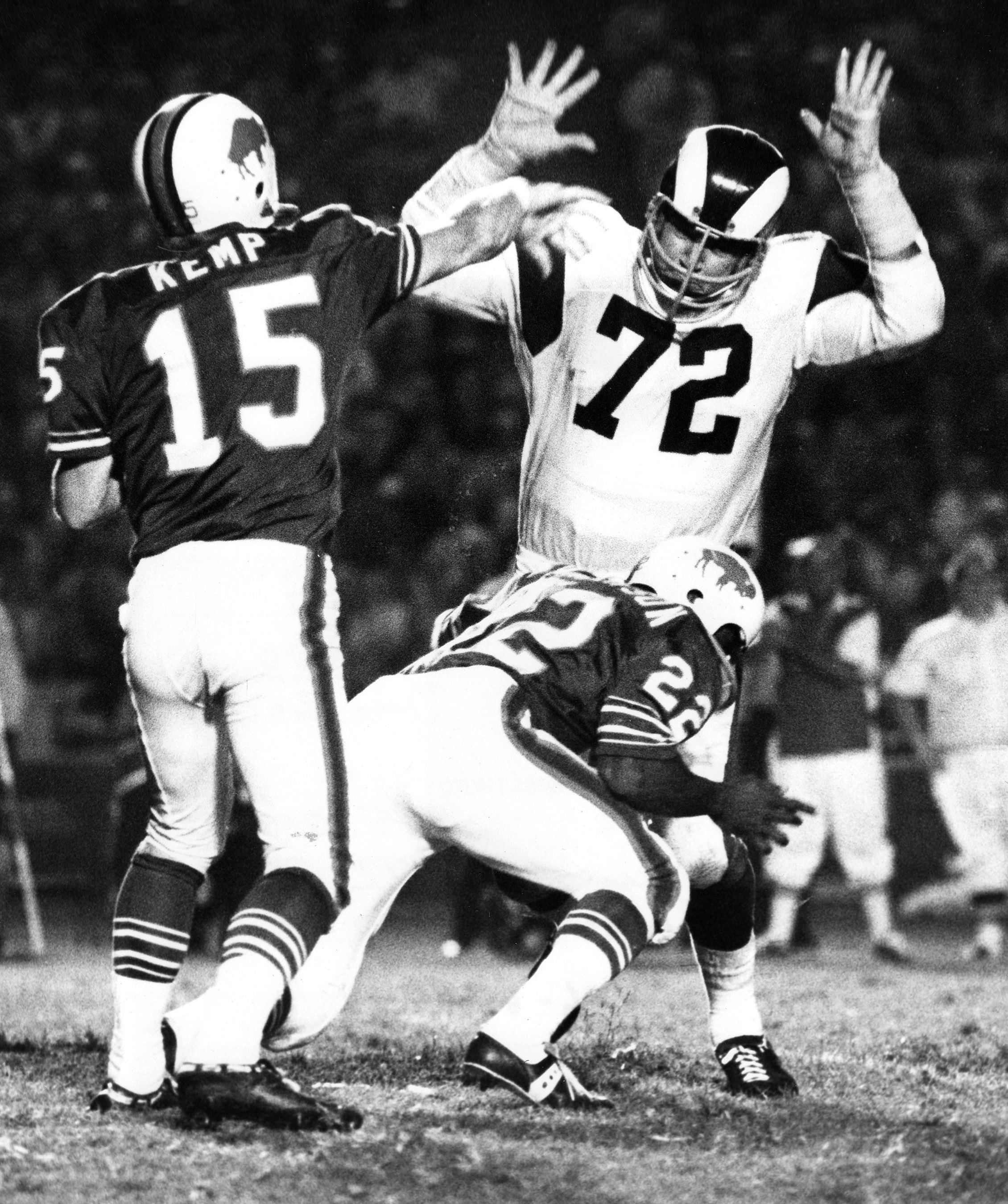
After proposing, Kemp did six months of army service. And following their wedding on July 19, 1958, at Joanne’s home church in tiny Fillmore, California, they flew to Pittsburgh. Though Jack was cut by the Steelers and moved from team to team, Joanne was happy. "I loved that football life," she said.
Kemp got to play in four games for the Steelers in the 1957 season and looked forward to more playing time in 1958. It was not to be. Kemp was an excellent punter, but in an exhibition game against the Rams in LA, Parker told him to kick the ball away from Jon Arnett, the premier kick returner in the league. Kick it out of bounds if you have to, Parker said. But Kemp wanted to impress his family and fiancée, who were in the stands, by punting over Arnett’s head. Kemp boomed the kick, but Arnett caught it and returned it for a touchdown. As Kemp walked off the field, Parker promptly fired him. "Kemp, you may make it in the NFL, but not with the Pittsburgh Steelers," he barked.
Kemp was not discouraged. The New York Giants quickly signed him to their taxi squad, whose players practiced with the team but didn’t suit up for games. He was on the sidelines for the 1958 NFL championship game, which the Giants lost to the Baltimore Colts in overtime in the so-called Greatest Game Ever Played. But he got a full share of the loser’s bonus—$1,230—thanks to star running back Frank Gifford’s intervention on behalf of the taxi squad. The bonus allowed the Kemps to buy their first house, in Orange County, California.
The next season, the Giants found themselves with too many quarterbacks, so they dispatched Kemp to the Calgary Stampeders of the Canadian Football League. However, the CFL required teams to carry a quota of Canadian citizens, so he was ruled ineligible. The San Francisco 49ers signed him as their third-string quarterback behind Y. A. Tittle and John Brodie. But Kemp was again ruled ineligible because he’d played in Canada that year. It was his fifth cut in two seasons.
For once, Kemp was crestfallen. His parents drove to Calgary to bring him home. His mother refused to let her son be discouraged. "She expected him to grow in the experience," Dick Kemp said. "Mom said that when one door closes, another door of opportunity would open," a precept familiar to Christian Scientists and a byword for Kemp and his family.
The door that opened was the American Football League, the junior rival to the NFL created in 1960. For Kemp, the AFL was a godsend. Kemp came close to signing with the Buffalo Bills in 1960, but the team balked at his demand for a no-cut contract, and the deal fell through. Having been cut so many times, Kemp wanted job security. Fortunately, General Manager Frank Leahy and Coach Sid Gillman of the Los Angeles Chargers gave it to him, and he moved back to California.
Kemp was thrilled to play in Coach Gillman’s pass-oriented offense, and the two became close friends. "Sid Gillman was like a surrogate father to Jack," Paul Kemp said. Gillman said numerous times publicly that if he’d had a son, he’d want it to be Jack Kemp. "It caused quite a stir in the press."
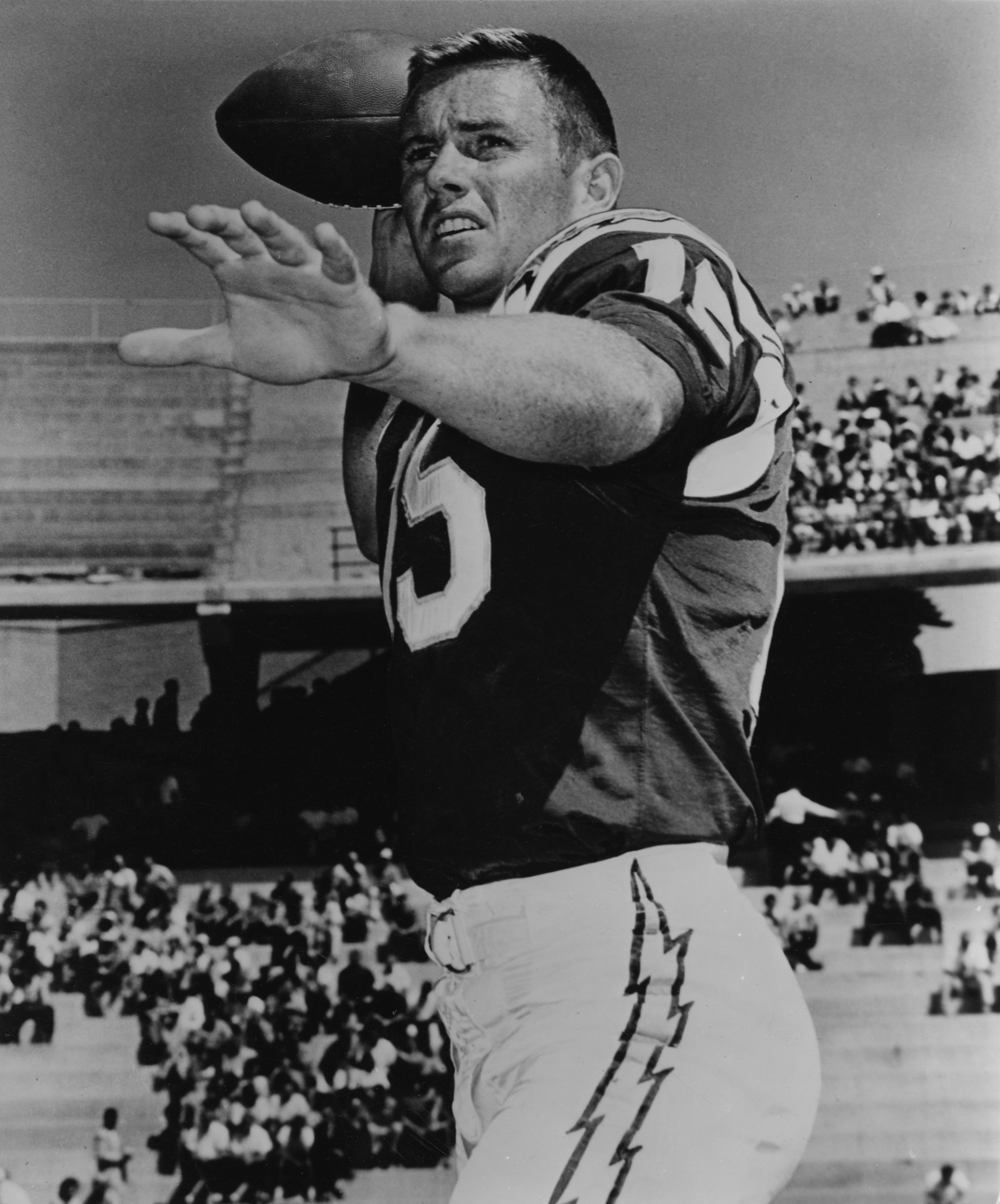
Kemp caused a stir on the field too. As starting quarterback for the Chargers in 1960, Kemp led the team to a 10-4 record and a Western Division championship. He set his career highs for pass attempts, completions, pass yardage, and touchdowns. His career was finally taking off—and seeds for something more were also being planted.
The league championship game against the Houston Oilers was a revelation to Kemp. He was shocked to discover that the families of black players had to sit in end zone seats while white players’ families were in sideline seats. And though Chargers owner Barron Hilton had a hotel in Houston, the black players roomed separately in a dormitory at the University of Houston. As an NFL player, Kemp had seen very little racial segregation because the league had no teams in the South. The experience in Houston stunned him.
Next time a racial problem arose, Kemp wasn’t quiet. In 1961, the Chargers—now the San Diego Chargers—played a game in Dallas, where Hilton also owned a hotel. The white players were supposed to stay there, while the black players were to be housed in a hotel miles away in Grand Prairie. "Jack went to Sid Gillman and said, ‘This is not acceptable,’" said punter Al Maguire. "‘Either we stay as a team or we don’t play.’ And Kemp was the guy that actually did it. We all ended up in the crappiest hotel in Grand Prairie, Texas. [But] it was absolutely the right thing to do."
After two full seasons with the Chargers, Kemp became the Bills’ quarterback through a miscue by Gillman. In the second game of the 1962 season, against the New York Titans (later the New York Jets), Kemp suffered his famous injury, resulting in his permanent "football finger." To activate another player, Gillman tried to hide Kemp on the "injured reserve" list, hoping other teams wouldn’t notice. But three did notice and claimed Kemp. AFL commissioner Joe Foss ruled that the Bills were first, and the team obtained Kemp’s contract for $100 in what football historian Ed Gruver called "the greatest steal in AFL history." Kemp joked, "I didn’t mind them getting me for 100 bucks, but when they asked for change, that really bothered me." Gillman was devastated, and Kemp wasn’t pleased. He didn’t like going to Buffalo, but under AFL rules, he didn’t have a choice.
Though accidental, Kemp’s arrival in Buffalo was enormously beneficial to Kemp and to the city. In his first home game, in late 1962, he led the Bills to a 23-14 win over the Dallas Texans (now the Kansas City Chiefs). Completing twenty-one passes for 248 yards and two touch downs in the game, he was carried off the field by victory-starved Buffalo fans. His victories continued. Kemp led the Bills to AFL championships in 1964 and 1965, earning a reputation as a winner and stirring the economically depressed city’s spirits.
Kemp was a risk-taking leader. "The rule for quarterbacks is that their best friends are the sideline and the turf," said Ed Rutkowski, who sometimes played that position as well as wide receiver and defensive back. Kemp ignored the rule. Rather than slip out of bounds or slide to the ground before being hit, he ran head-on into linebackers. As a result he suffered eleven concussions in his career, among many other injuries. At one point, Kemp joked about a Buffalo News headline reading "Kemp Suffers Concussion," with a subhead reading, "X-Rays of Head Reveal Nothing."
Bills fans, notoriously tough on players when they didn’t perform well, had a love-hate relationship with Kemp. Rutkowski said Kemp joked years later that football players had become soft since the years when he was a quarterback. "When we played, if I threw an interception or we had a bad play, people would throw garbage at us and beer cans and rotten tomatoes. And that was when we were coming out of our house."
Rutkowski recalled one game in which the Bills were performing especially badly, fumbling and getting intercepted, and the boos were deafening. In the huddle, Kemp said to his team, "Let’s shut ‘em up." With the Bills on their own twenty-yard line, he called a long pass play with all-star Elbert ("Duby") Dubenion the intended receiver. Kemp lofted the ball to a racing Dubenion, who caught it for a 69-yard touchdown. The Bills walked off the field to a standing ovation.29
Coach Lou Saban created a quarterback controversy when the Bills drafted star Notre Dame quarterback Daryle Lamonica in 1963. Would Kemp start, or Lamonica? Lamonica, later dubbed "the Mad Bomber," could throw even farther than Kemp. And as an Italian American and a Catholic, he acquired an army of devoted fans in Buffalo. When Kemp was faltering, the fans demanded Lamonica, and vice versa. The rivalry bothered Kemp, though he and Lamonica got along well personally. Finally, approaching a game the Bills needed to win in order to clinch the division championship in 1964, Coach Saban wouldn’t say who would start. Fed up, Kemp told Saban, according to broadcaster Rick Azar, "Coach, I know you want to win. Let me tell you—I can win for you. I can win for this team." Saban let Kemp start and he led the team to a 24-14 win and, weeks later, to the AFL championship.
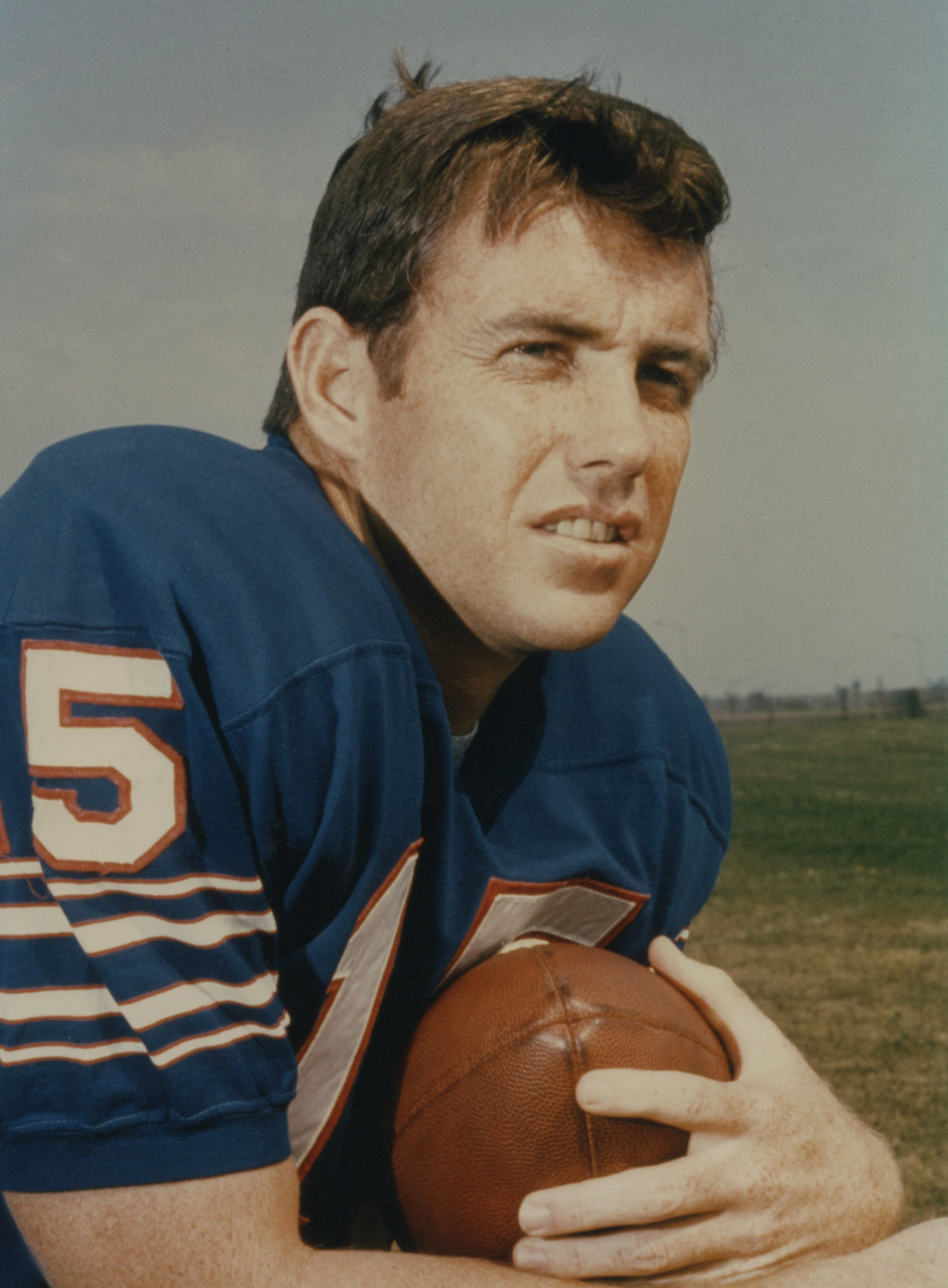
Besides being an on-field star, Kemp was elected president of the AFL Players Association in 1963 and held the position until the league’s merger with the NFL in 1969. He was also an effective mediator in Buffalo. Kemp didn’t like it that white players were always assigned white roommates, and blacks roomed with blacks, so he got it changed. He also supported a black players’ boycott of the AFL All-Star game to protest racial discrimination in New Orleans. In 1964, Kemp’s intervention kept the Bills’ star running back, Cookie Gilchrist, on the team after he refused to play in one game because he wasn’t getting the ball often enough. Kemp persuaded Gilchrist to apologize and Saban kept him on the team. He helped win the AFL championship, though Saban cut him the following year. When the AFL and NFL merged in 1970, AFL players, recognizing his leadership skills, wanted him to be president of the new combined union. Instead, he negotiated a compromise under which tight end John Mackey of the Baltimore Colts became president. They became friends for life.
Over seven seasons Kemp led the Bills to two AFL championships and four division championships. He was an AFL Pro Bowler in seven seasons and AFL Player of the Year and Most Valuable Player in 1965. He was AFL championship game MVP in both 1964 and 1965. He holds the AFL record for the most yards gained passing in a career, 21,130. In 1961 and 1964, he led the league in longest pass completions, 91 and 94 yards, respectively, and in those years as well as 1967, in yards per pass attempt and completion. He was number one in total offense in 1960 and 1963.
He also became one of the best-paid players in the AFL-but fell well short of Joe Namath’s record-setting starting salary of$427,000 at the New York Jets in 1965. Kemp’s last contract with the Bills, which he negotiated for himself, was $50,000.32 In Kemp’s day, a good veteran player could earn $25,000 or $26,000. A promising rookie might get $7,500, plus a signing bonus of$300.
For all of Kemp’s achievements, he is virtually certain never to make it into the Pro Football Hall of Fame. His 46.7 percent career passcompletion record—and his throwing more interceptions (183) than touchdown passes (114)—doesn’t qualify him, according to the late Buffalo News sportswriter Larry Felser, a Hall of Fame judge." Teammates have lobbied for his admission as a historic figure and for his Players Association role, but Felser said it’s unlikely to happen.
Kemp missed the entire 1968 season after defensive end Ron McDole fell on his right knee in training camp. He played in 1969, but the season was a 4-10 disaster despite the arrival of Heisman Trophy winner. Simpson. Recognizing that his best years were behind him, Kemp decided to retire. Roane Arledge, the president of ABC Sports, offered him a job as a TV color commentator. But Kemp wasn’t interested. He had other plans: politics.
Kemp had been an indifferent student in college, but as a football player, he became an avid reader of newspapers, news magazines, and books on economics, history, and politics. He used big words with his teammates, who laughed and called him "the Senator."
When he joined the Chargers in 1960, he met Herb Klein, editor of the San Diego Union, and became fascinated with politics. Klein became Kemp’s mentor and, along with Union sports editor Jack Murphy, encouraged Kemp to give speeches, first to promote the Chargers and later to address more political themes. Klein also persuaded Kemp to write columns for the Union. They spent hours talking about sports, which Klein loved, and politics.
In Buffalo, Ed Rutkowski said, "I would always be talking about the game plan and Jack would start talking about politics." On buses and planes to away games, his teammates read Playboy and Sports Illustrated, while Kemp devoured U.S. News, National Review, the Wall Street Journal, and books. In 1965, he attended two seminars at the Foundation for Economic Education (FEE), a small think tank at Irvington, New York, dedicated to free markets. FEE expanded Kemp’s reading list to include such dense classics as Friedrich Hayek’s The Constitution of Liberty and The Road to Serfdom, Ludwig von Mises’s Human Action, and Milton Friedman’s Capitalism and Freedom. Kemp lugged boxes of these and other books to the Bills’ training camp at Niagara University.
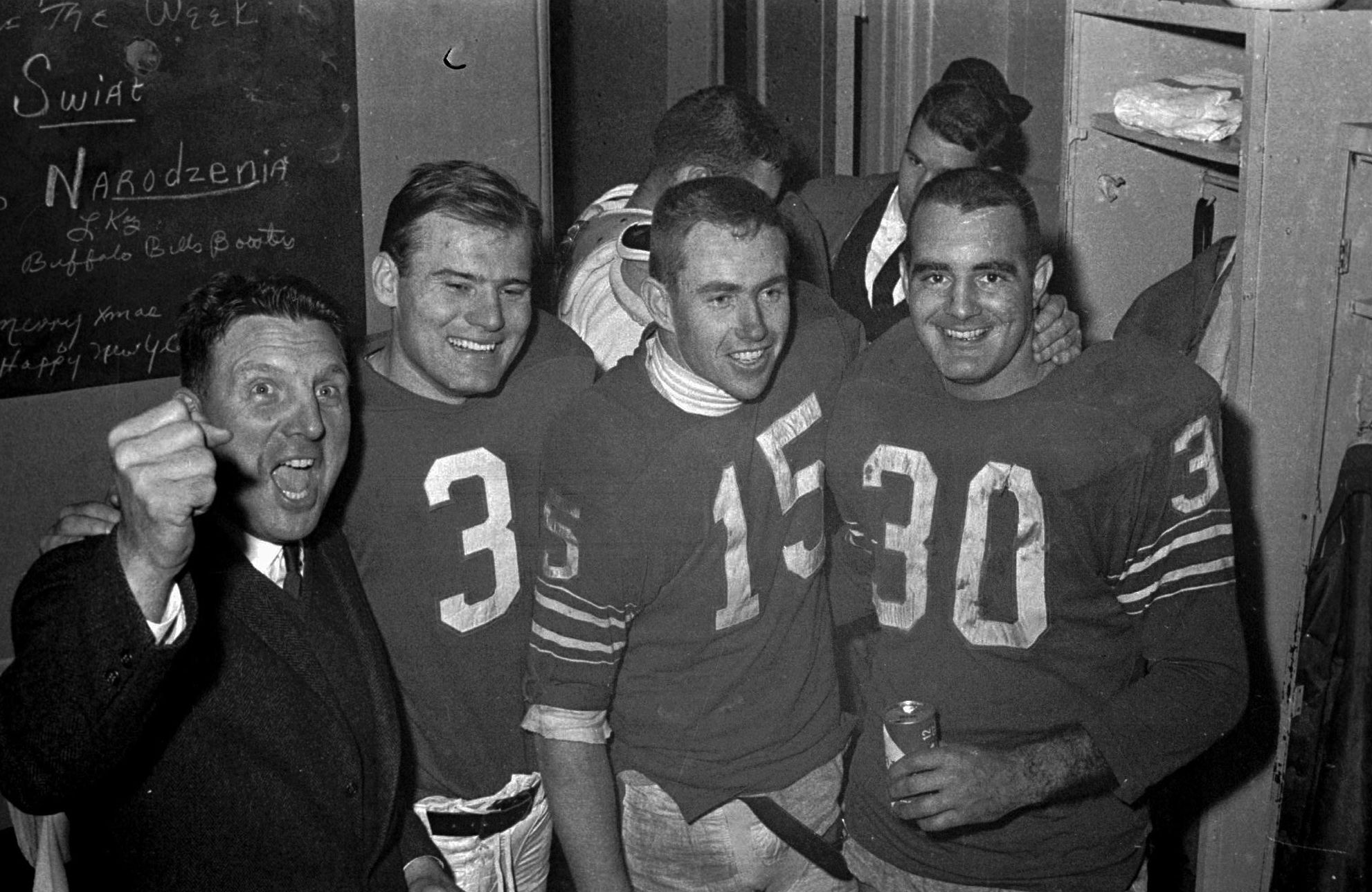
Kemp became an evangelist to teammates for conservatism and the Republican Party. He converted Rutkowski, who later became his top Buffalo-based congressional aide and then Erie County supervisor.
Kemp drew players and the traveling press into political discussions. "Jack used to come down to my seat, looking for a debating partner," said Felser. "He was fun to debate with," but he didn’t always win: "I was an FDR Democrat, still am." Not everyone liked his politics; when Kemp campaigned for Barry Goldwater in 1964, it stirred newspaper criticism in heavily Democratic Buffalo. But Kemp didn’t back down.
In 1967, Klein helped Kemp get a job during the off-season as an intern in California governor Ronald Reagan’s communications office. The internship was a first step into active politics, but it had a downside. The job led to a rumor of homosexuality that took decades—and investigative reporting by Robert Novak—to be knocked down definitively.
In 1967, the columnist Drew Pearson broke the story of Reagan’s firing a "homosexual ring" on his staff. Pearson reported the ring involved "an athlete" whom he didn’t name. Rumors spread immediately that the athlete was Kemp, who had co-purchased a property near Lake Tahoe with one of the ring’s participants. Kemp said it was merely an investment and that he had never stayed there.
Novak began investigating the scandal in 1978. He tracked down one of the gay principals, who was "adamant that Kemp was not part of the homosexual group" and reported his denial in a column." But the rumor continued to circulate in the political community. Novak wrote he was told that it kept Reagan from considering Kemp as his vice presidential running mate in 1980, and it cropped up again when Kemp ran for president in 1988. It didn’t die until Novak recounted all the evidence disproving the rumor in his 2007 autobiography, Prince of Darkness.
By the time his football career ended, Kemp had developed political savvy and had become an excellent speaker. His speeches, once vaguely about leadership, were now full of concrete economic and political con tent. Observing him, Al Ballanca, the chairman of the Erie County (Buffalo) Republican Party, told Kemp he’d make a good candidate for Congress, and Kemp agreed. "If you could take the boos of 47,000 people in War Memorial Stadium, you could take the heat in politics," he said.
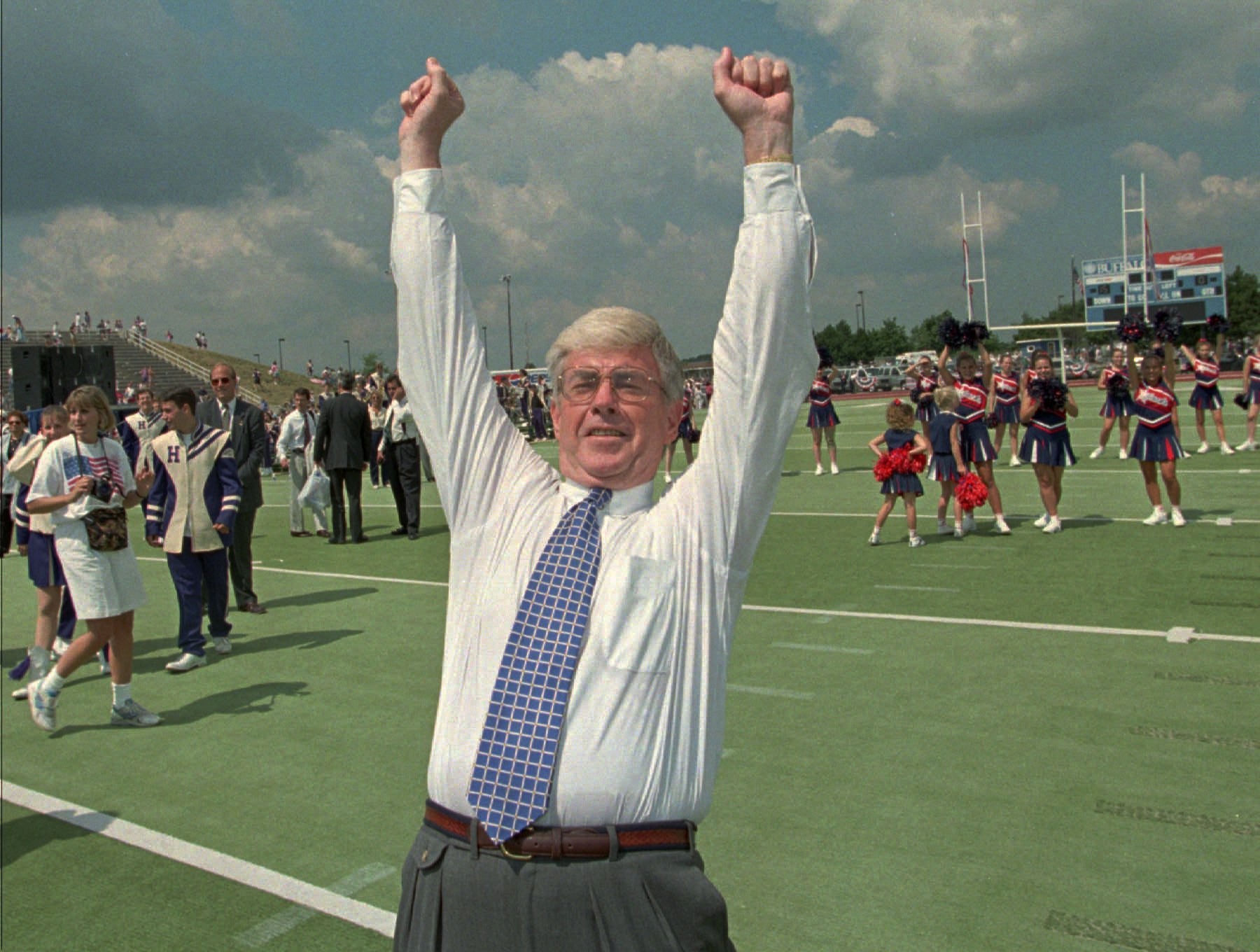
It soon became his favorite line at campaign events.
Kemp still had three years to go on his no-cut contract when he announced for Congress in March 1970. The seat he sought, New York’s 39th District, included part of the city of Buffalo but mostly encompassed working-class suburbs of Erie County. Kemp jokingly threatened that if he was not elected, he’d return to play for the Bills.
Winning the 39th District was a challenge. The district had been represented by both Republicans and Democrats, but since 1964 the seat had been occupied by Democrat Max McCarthy. It was now open because McCarthy had decided to run for the U.S. Senate, and there was every reason to believe his constituents would continue to vote Democratic. Tom Flaherty, the Democrat nominated to replace McCarthy, was a Buffalo attorney and former city official who had an ethnic advantage in the heavily Catholic district. Kemp countered by bringing in ex-Notre Dame coach Frank Leahy to speak for him, along with O.J. Simpson, Lou Saban, and Daryle Lamonica, and he asked Ed Rutkowski, a Democrat, to help run his campaign. Rutkowski says he offered to change his registration to Republican, but Kemp urged him not to, pointing out that his Democratic affiliation would look good in Buffalo.
At age thirty-five, Kemp was full of youthful energy, but some said his youth was a liability. His football stardom, largely an asset, also risked making him seem unserious. As Rutkowski later recounted, "People were saying, ‘We recognize the name Jack Kemp, but what the hell’s a football player think he’s doing running for Congress?’" The creative director of an advertising agency retained by the campaign told Kemp he looked "too boyish," so he had his team draw wrinkles on Kemp’s face to make him seem older in campaign ads. They also encouraged him to develop a deeper voice. That didn’t work: Kemp retained a high-pitched, raspy voice for life.
Kemp initially was reluctant to directly ask people for their support. But he learned to greet workers arriving at Bethlehem Steel’s factory gates, where his charisma could win them over. Joanne organized coffee klatches for voters, and that won them over too. In a debate, Flaherty brought up Kemp’s support for Goldwater in 1964, whereupon Kemp got Flaherty to admit that he’d supported Lyndon Johnson, then still deeply unpopular. Anyway, he said, the 1970 election was not about 1964, but about the future.

Kemp’s friendliness with organized labor was a point in his favor. After six years as president of the AFL players’ union, he regarded collective bargaining as "a sacred right." Most Republicans favored right-to-work laws that ban compulsory unionization, but Kemp never endorsed them. He later said he belonged to "the Lane Kirkland wing of the Republican party," referring to the then-president of the AFL-CIO.
Kemp’s hard work and celebrity paid off. He won the election with 51.6 percent of the vote. Elated, he and Joanne prepared to move to Washington with their three children—Jeff, then eleven years old, Jennifer, eight, and Judith, five. Their fourth child, Jimmy, was born in 1971 during Kemp’s first year in Congress.
Along with his quarterback’s approach to leadership, Kemp kept an important memento of his years on the field. In his congressional office, he hung a giant picture of himself about to be demolished by 6-foot-9, 315-pound Chargers defensive tackle Ernie Ladd—a reminder to himself and visitors that, whatever the challenges of politics, he’d been through worse. "Pro football gave me a good sense of perspective to enter politics. I’d already been booed, cheered, cut, sold, traded and hung in effigy," he would later say.
Five-year-old Jack Kemp certainly never considered preparation for politics a side advantage to playing football, but his thick skin would stand the young congressman in good stead as he set out for D.C. He didn’t know it yet, but he was soon to be the champion of a new economic model. Washington’s elites would not appreciate the young congressman’s big ideas.
Excerpted from Jack Kemp: The Bleeding Heart Conservative Who Changed America, by Morton Kondracke and Fred Barnes with permission of Sentinel, an imprint of Penguin Publishing Group, a division of Penguin Random House LLC. Copyright © Frederic Wood Barnes, Jr. and Morton M. Kondracke, 2015.
